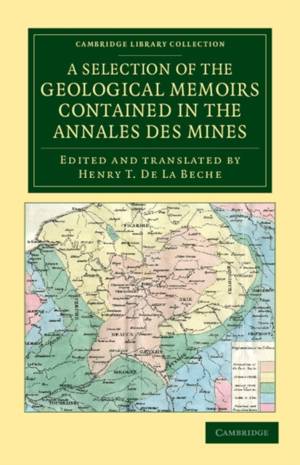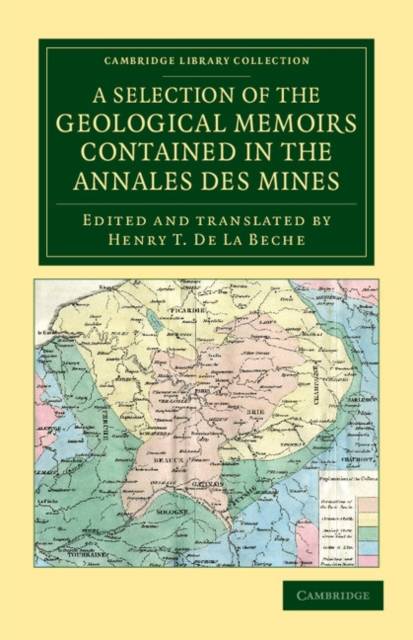
Door een staking bij bpost kan je online bestelling op dit moment iets langer onderweg zijn dan voorzien. Dringend iets nodig? Onze winkels ontvangen jou met open armen!
- Afhalen na 1 uur in een winkel met voorraad
- Gratis thuislevering in België vanaf € 30
- Ruim aanbod met 7 miljoen producten
Door een staking bij bpost kan je online bestelling op dit moment iets langer onderweg zijn dan voorzien. Dringend iets nodig? Onze winkels ontvangen jou met open armen!
- Afhalen na 1 uur in een winkel met voorraad
- Gratis thuislevering in België vanaf € 30
- Ruim aanbod met 7 miljoen producten
Zoeken
A Selection of the Geological Memoirs Contained in the Annales des Mines
Henry T De La Beche
€ 90,45
+ 180 punten
Omschrijving
Sir Henry Thomas de la Beche (1796-1855) was a talented and influential geologist. A friend of Mary Anning, he produced the famous lithograph Duria antiquior (1830), the first reconstruction of a scene from an ancient world, to support her work. He promoted government involvement in geology and became the founding Director of the British Geological Survey, which was officially recognised in 1835. Inspired by his work in Cornwall, he later founded the Royal School of Mines and the Museum of Practical Geology. Among his published works was a Manual of Geology (1831), which went through three English editions and was published in France, Germany and America. This 1824 collection of translations includes studies on sites across Europe and notes on the production of an early geological map of France. He also provides a table of equivalent formations and a translation of Brongniart's Classification of the Mixed Rocks.
Specificaties
Betrokkenen
- Auteur(s):
- Uitgeverij:
Inhoud
- Aantal bladzijden:
- 406
- Taal:
- Engels
- Reeks:
Eigenschappen
- Productcode (EAN):
- 9781108048408
- Verschijningsdatum:
- 10/05/2012
- Uitvoering:
- Paperback
- Formaat:
- Trade paperback (VS)
- Afmetingen:
- 140 mm x 216 mm
- Gewicht:
- 512 g

Alleen bij Standaard Boekhandel
+ 180 punten op je klantenkaart van Standaard Boekhandel
Beoordelingen
We publiceren alleen reviews die voldoen aan de voorwaarden voor reviews. Bekijk onze voorwaarden voor reviews.











